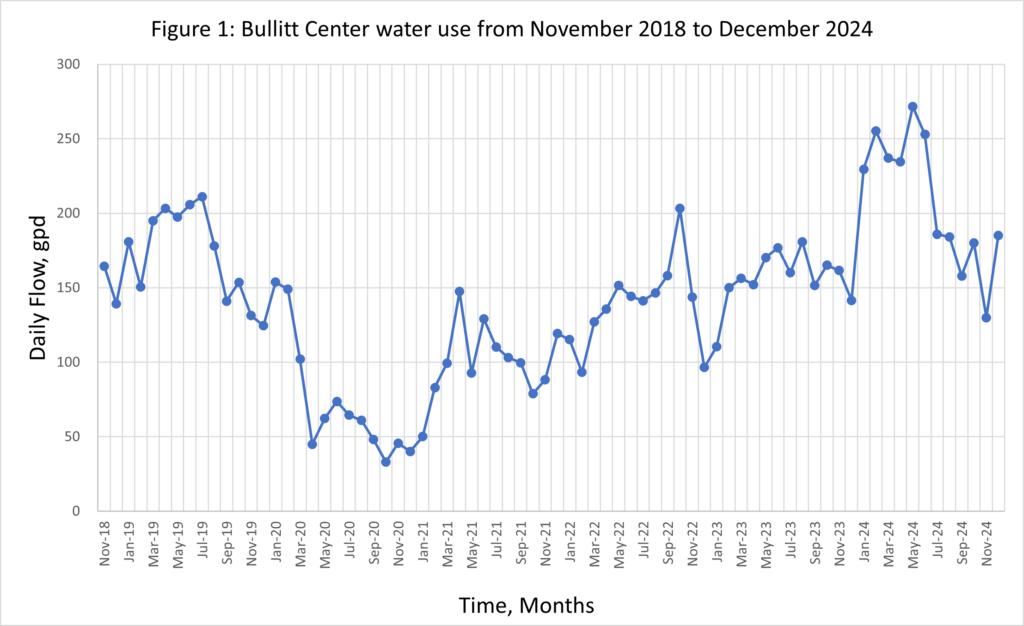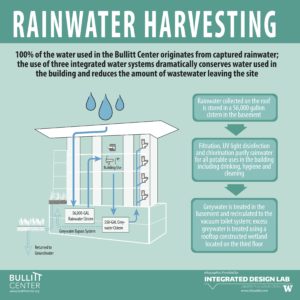Rainwater Harvesting
Like a Doug fir forest, the Bullitt Center re-uses water and returns excess to the soil.
- 100% of the water used in the Bullitt Center comes from captured rainwater.
- Graywater is treated by a constructed wetland on the third floor and then returned to the soil to help recharge the aquifer.
The Bullitt Center is designed to help restore the ecological processes of the site back to the way they functioned hundreds of years ago when it was a Douglas fir forest.
Like a forest, the Bullitt Center must use only the water it can collect onsite.
Below the solar panels, a parapet roof captures rainwater and brings it to downspouts that carry the water to a 56,000-gallon, concrete cistern in the basement. On its way down, the water is funneled through a vortex filter, which removes large particulates. To create the potable water, the rainwater is filtered through a 5-micron cartridge filter and two 0.5-micron carbon filters before being treated by ultraviolet light; a small amount of chlorine is added at the end. Treated water is stored in three, 500-gallon potable water storage tanks.
The Bullitt Center documented the process to achieve regulatory approval for the rainwater-to-potable water system here. Figure 1 below illustrates the potable water use from November 2018 through December 2024.
An article on the performance of the potable water treatment system is also available:
Thompson, P. L., & Porter, R. L. (2020). Potable Water for an Office Building from Rainwater Collection. Journal: American Water Works Association, 112(12).
Next Building Feature: Regenerative Elevator


